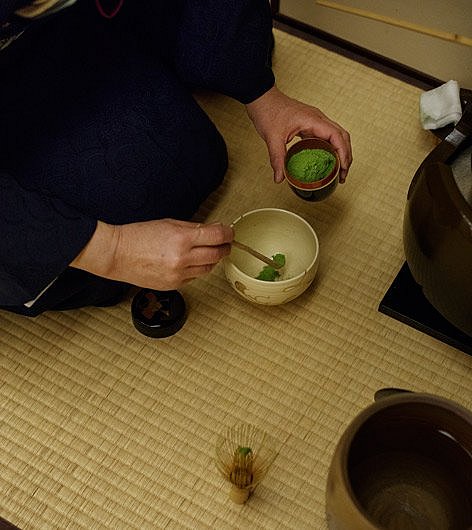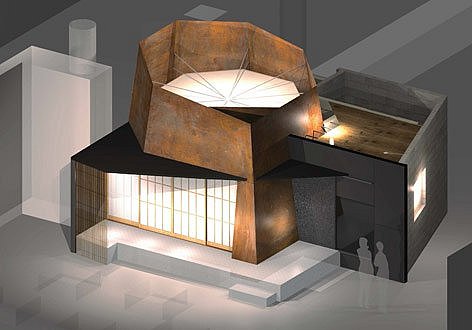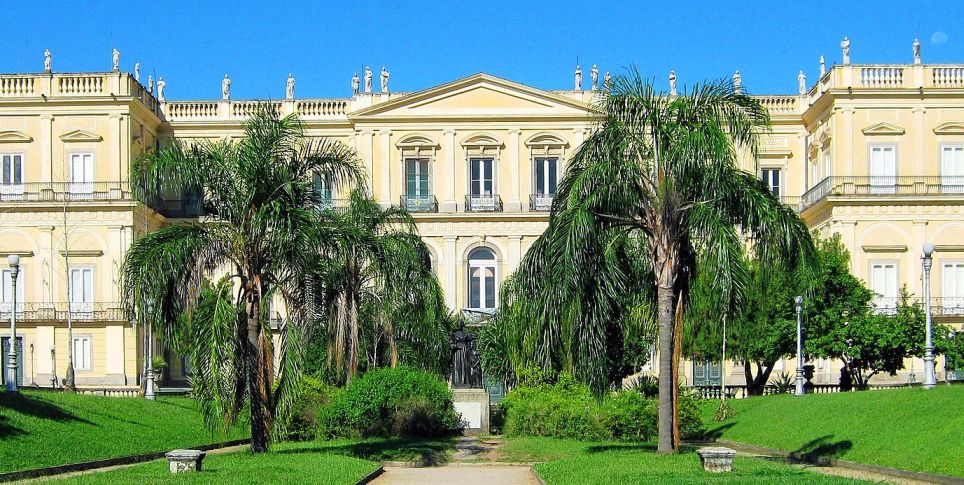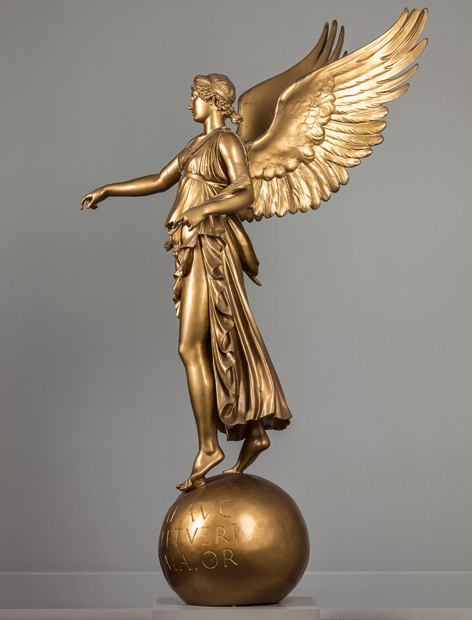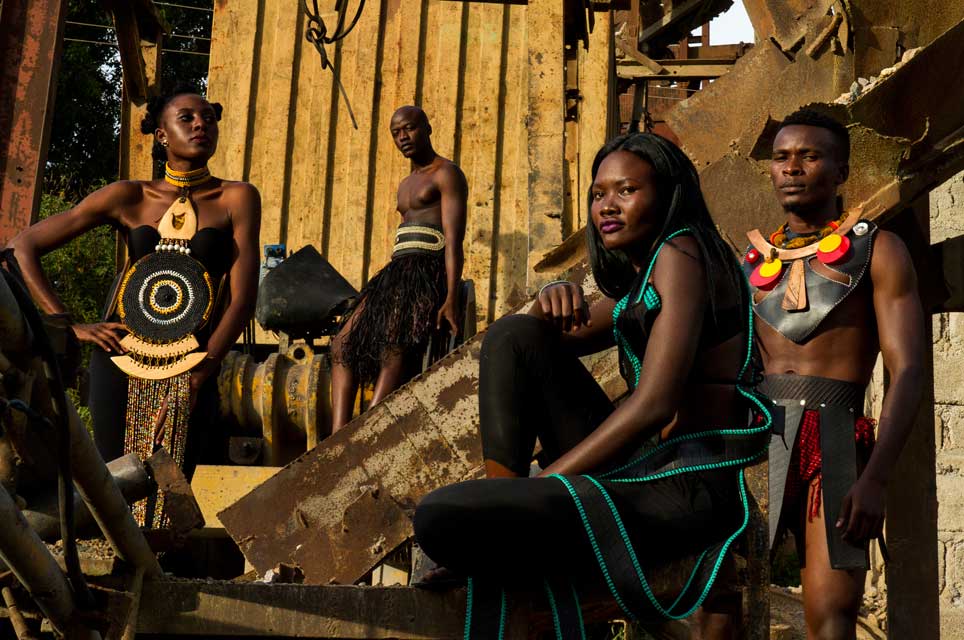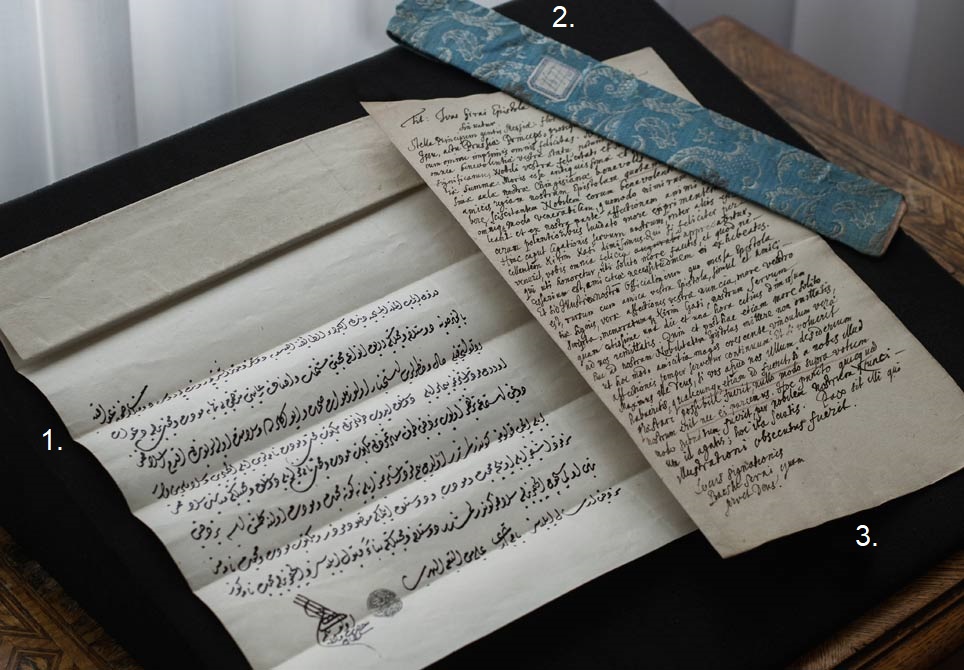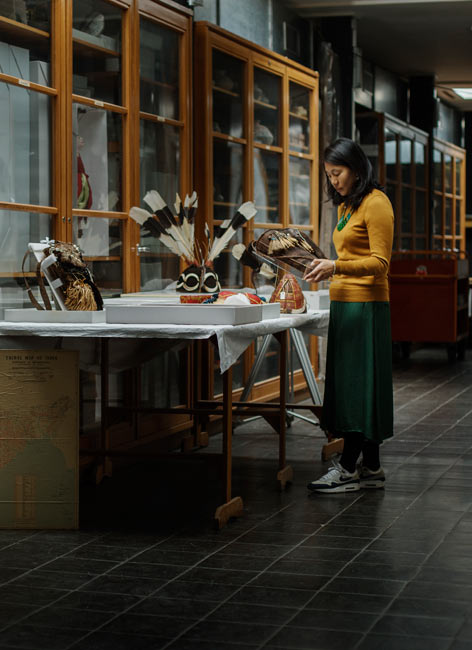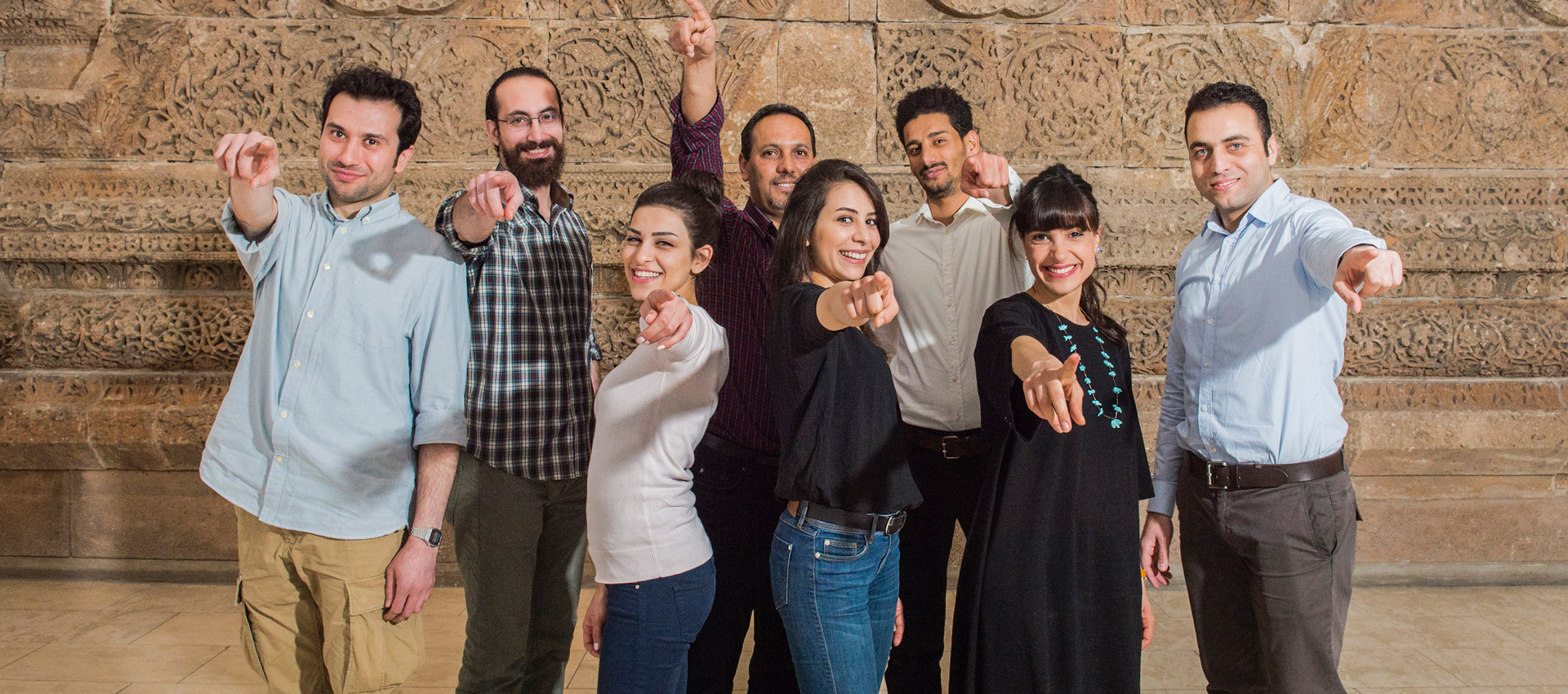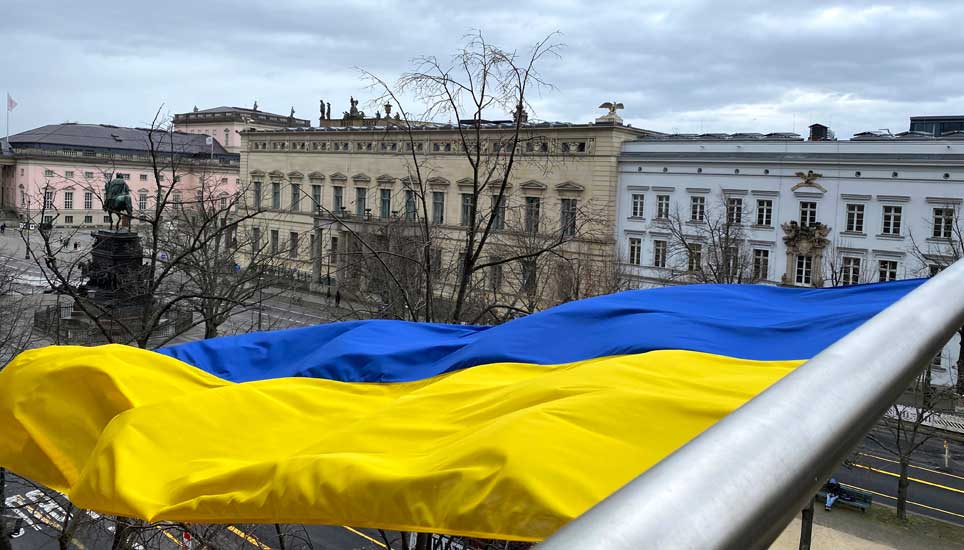In Dahlem, an association practices traditional Japanese tea ceremonies. In the future it will perform them in a newly designed, unique tea house in the Humboldt Forum. Visiting the Chadō Urasenke Tankōkai Berlin Association
Subdued light immerses the room in soft colors as the five students of the Chadō Urasenke Tankōkai Berlin Association reverently enter. Wearing white socks and kimonos, they take a seat on a floor covered with traditional Japanese rice straw mats, remaining almost motionless in the seiza position. Tea master Nobuko Sōchō Sugai-Baumgarten appears in a doorway on the left. She gives the students a friendly nod and walks directly to a niche at the back of the otherwise simply furnished room where a kettle of water is suspended over a hearth. She glides carefully to her knees and gracefully begins to make usucha, a foamy, light matcha tea. After a few minutes, the tea master pours the light green liquid into the ceramic bowl to her right. As if by signal, one of the students gets up, takes the white bowl with a deep bow and returns to her position. She slowly lifts the bowl to her lips, drinks with her eyes closed and her head tilted back. She repeats the sequence three times and then the bowl is empty. The procedure begins again, repeating until each student has enjoyed a bowl of tea. While the tea is being brewed, cookies are passed around and the participants speak in subdued voices.

The Chadō Urasenke Tankōkai Berlin Association © Christoph Mack
What is being performed here in the former exhibition rooms of the Museum für Asiatische Kunst (Asian Art Museum) in Berlin-Dahlem is a Japanese tea ceremony that is simply called “the way of tea” (chadō) by most practitioners. The origin of the ritual can be traced back to the 13th century. Over the course of time, the tea ceremony became a type of national symbol. Almost all Japanese diplomats take a basic course to learn it. “For practitioners, the ‘way of tea’ is a lifestyle that includes different elements – among them training in etiquette. The actions follow a strict choreography. Which choreographic elements are performed in which order depends on the type of gathering,” explained Alexander Hofmann, curator for Japanese art in the Museum für Asiatische Kunst of the Staatliche Museen zu Berlin (National Museums in Berlin). Emphasizing the ceremony’s choreographic nature confirms the impression of an artistic performance, which is intensified by the stage-like room-in-room construction of the tearoom in Dahlem.
Tea master Nobuko Sōchō Sugai-Baumgarten, who is currently the president of the Chadō Urasenke Tankōkai Berlin Association, also emphasizes the ceremony’s artistic nature. After studying art in Tokyo and Düsseldorf and working as an artist for many years, she has devoted herself to the “way of tea” for several years. But unlike many tea masters in Japan, who tend to practice the ceremony conservatively, Sugai-Baumgarten has a more flexible approach. She intellectually connects tradition and creative reinterpretation while remaining true to the fundamental concept behind the various schools of tea.
The tearoom in Dahlem is fittingly named Bôki, which literally means “forgetting everyday business.” Tea ceremonies have been held here regularly since 2005 – a tradition that the Museum für Asiatische Kunst in the Humboldt Forum wants to continue in the newly built Berliner Schloss (Berlin Palace). As Alexander Hofmann explained: “We will construct a unique tea house for the Humboldt Forum. The design comes from a team around architect Jun Ura from Kanazawa and is a work of art as well as architecture. The tea house was designed in close coordination with a Japanese tea master, Sugai-Baumgarten, and artisans from various disciplines.” Those interested will be able to admire or even participate in the art of the Japanese tea ceremony in the future. There is hardly a better opportunity to escape daily life and leave your worries behind…at least for a while.
Alexander Hofmann
The art historian was born in 1970 and is curator for Japanese art at the Museum für Asiatische Kunst of the Staatliche Museen zu Berlin.

